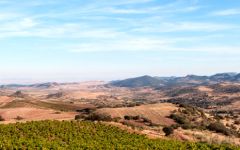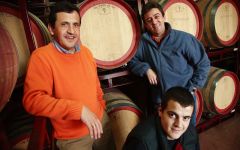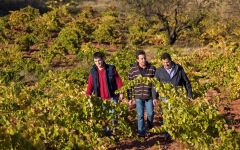Alto Moncayo 2017



Product Details
Your Rating
Somm Note
Winemaker Notes
This wine carries a remarkable complex nose, with balsamic aromas, redolent of black fruit, roasted notes and a very good structure in the mouth.
Other Vintages
2020-
Wine
Enthusiast -
Wine
Spectator
-
James
Suckling
-
Wine
Spectator -
Wilfred
Wong
-
Robert
Parker
-
Robert
Parker
-
James
Suckling
-
Wine
Enthusiast -
Wine
Spectator
-
Robert
Parker -
Wine
Spectator -
Wine
Enthusiast
-
Robert
Parker -
Wine
Spectator
-
Robert
Parker -
Wine
Spectator
-
Robert
Parker
-
Robert
Parker







Bodegas Alto Moncayo is a winery located in the Campo de Borja D.O. It was founded in 2002 with the aim of turning it into a world reference for Garnacha wines of the highest quality, crafted from some of the oldest native vine clones in the area.The garnacha grape is one of the varieties that best expresses its terroir. Thus, the Garnacha of Alto Moncayo is different from the rest of the Campo de Borja D.O area. This is due to the very strict selection made from the vineyards, the type of soil in which it is grown, the microclimate, and the age of the vines. Located in Borja- the heart of the Campo de Borja DO . Vines are planted at the foothills of El Moncayo which is the highest point in the Iberian Mountain Range (2,315 m) and the winery's namesake. The region experiences a continental climate with hot summers and cold winters. Vineyards are planted on very unique soils of red clay (indicative of being rich in iron) mixed with red slate, and because of the hillside location are shallow and nutrient-deficient. The Garnacha grapes of Alto Moncayo undergo very strict vineyard selection, from vines planted as far back as the early 1900's through the 1970's. Only the most perfectly mature clusters are selected and carried in small crates to prevent crushing, where they are further sorted and selected at triage tables. Wines undergo malolactic fermentation in both French & American oak, and aged in new barrels between anywhere from 16-24 months. These practices, in combination with the unique microclimate of the area ensure superior quality Garnacha that is distinct from any other in the Campo de Borja D.O.

Grenache thrives in any warm, Mediterranean climate where ample sunlight allows its clusters to achieve full phenolic ripeness. While Grenache's birthplace is Spain (there called Garnacha), today it is more recognized as the key player in the red blends of the Southern Rhône, namely Châteauneuf-du-Pape, Côtes du Rhône and its villages. Somm Secret—The Italian island of Sardinia produces bold, rustic, single varietal Grenache (there called Cannonau). California, Washington and Australia have achieved found success with Grenache, both flying solo and in blends.

Campo de Borja DO sits in the northwest province of Zaragoza (Aragon, Spain) south of Rioja and north of Cariñena. Since this area acquired DO status in the 1980s, it has gradually shown its own unique identity. Campo de Borja’s winegrowing history and heritage is rich in relation to Garnacha; the oldest vineyards in the DO date back to 1890. Furthermore, of the almost 4,000 hectares of this variety, more than 2,000 are between 30 and 50 years old.
Most production continues to be reds, and the number of crianzas and reservas is growing. Though less common, they produce white wines as well. Today, both red and rosé wines have won the respect of experts, and the intensely fruity, young red wines enjoy significant commercial success. The principal white grape varieties are Macabeo, Moscatel, Chardonnay, Garnacha Blanca, Sauvignon Blanc and Verdejo. The principal red grape varieties include Garnacha Tinta, Tempranillo, Syrah, Mazuela, Cabernet Sauvignon and Merlot.
